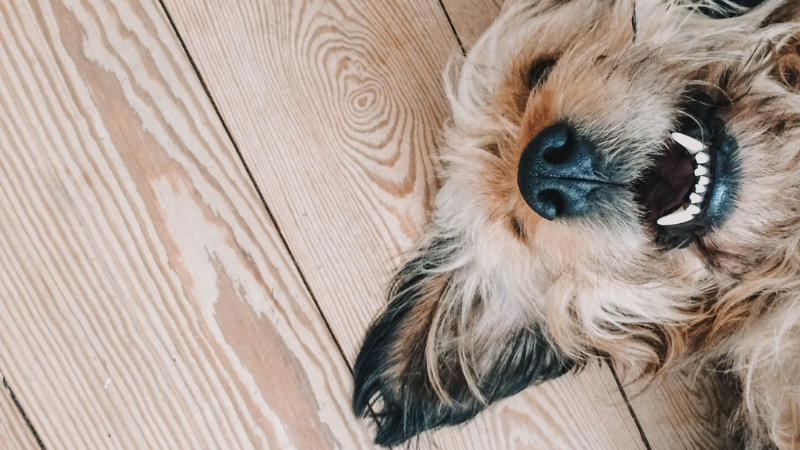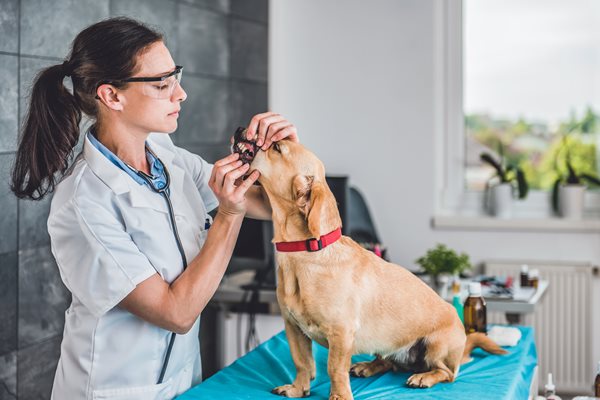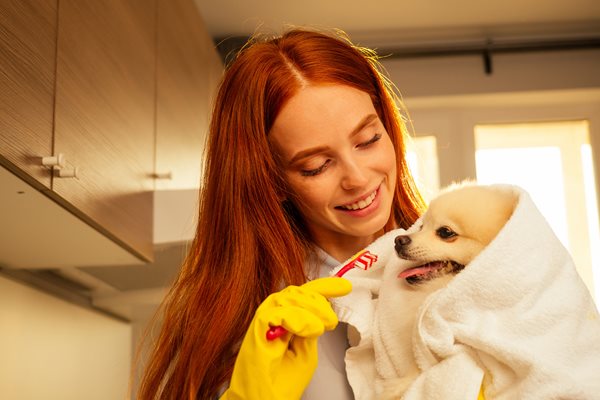
Dental health is critical to the overall well-being of all pets. Periodontal disease leading to infection and tooth loss is the most common cause of dental pain and loss of health.
Some dog breeds develop dental disease earlier while others have their own unique problems. Here’s a look at the dog breeds who are more prone to dental disease.
Dental disease and dog breeds

Periodontal disease
All dogs are susceptible to dental disease. Bacteria in the mouth leads to plaque and tartar formation. Over time, this process results in infection and deep pockets around the teeth caused by bone loss.As the disease progresses, teeth loosen, and pain becomes chronic. Toy breeds, short-nosed breeds, terriers, and Dachshunds are more susceptible to periodontal disease at an earlier age than other breeds.
Deciduous teeth
Like people, dogs develop baby teeth that fall out and are replaced with their adult teeth. Toy breeds like Yorkshire terriers and Chihuahuas as well as short-nosed breeds like Pugs and Shih Tzus may take longer to shed their baby teeth.In some cases, the baby teeth don’t fall out and your veterinarian may need to extract them to prevent damage to the adult teeth as they erupt.
Base narrow canine (fang) teeth
Generally lower canine (fang) teeth sit just in front of the adult upper teeth when the mouth is closed.This is referred to as a scissor bite. Standard poodles, Collies, and German Shepherds may face challenges as puppies when their adult canine teeth on the bottom jaw erupt and sit just inside the upper teeth. These puppies experience pain, because their lower canines dig into the upper palate.
Teeth crowding
All dogs have 42 teeth in their mouths, no matter their size. Toy breeds and short-nosed breeds like Pugs, Shih Tzus, Boston Terriers, and some bulldog breeds are prone to rotation of their adult teeth and malocclusions.If the teeth don’t line up the right way, these dogs can be prone chronic trauma and dental disease as food and bacteria collect in these abnormal spaces. A different type of malocclusion known as lance canines occurs in Shetland Sheepdogs where their upper canines rotate forward toward the front of the mouth.
Gingival Hyperplasia
Boxers, bulldog breeds, and occasionally Cocker Spaniels may develop an abnormal inflammatory response to the bacteria in their mouths. These dogs develop excessive gum tissue around their teeth and occasionally it completely buries their teeth. Unfortunately, this is not a protective mechanism, and tooth loss may still occur.Assertive chewers
Labrador and Golden Retrievers, Belgian Malinois, and Pitbull-type breeds can be very enthusiastic about chewing on rawhides, bones, toys, rocks, and whatever else they find in your backyard.Aggressive chewing can lead to broken teeth and acute pain. You can gauge whether a chew is too hard by slapping it against your knee. If it hurts you or doesn’t bend, the object is not appropriate to act as a chew toy for your dog.
What can I do at home?

You are the front line to protecting your dog’s dental health – no matter what their breed. Start checking your dog’s mouth daily from the day they come home from the shelter or breeder.
Your veterinarian will ensure that adult teeth are settling into the right position and make recommendations about extracting problem deciduous teeth during routine vaccine visits.
The gold standard of dental home care for adult dogs is daily brushing. This habit allows you to find problems as soon as possible.
Your clinic team will also check your dog’s teeth as part of annual wellness exams in order to advise whether it’s time for a teeth cleaning and comprehensive oral assessment. Prevention and prompt veterinary care will minimize the impact of dental disease and help maintain your dog’s oral and overall health.
